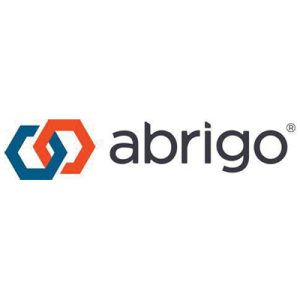Introducing new banking products in the financial services industry is an exciting venture and what gives financial institutions a competitive advantage. However, with all innovation comes great responsibility, especially when it comes to safeguarding those new products against fraud.
It is no secret that a significant increase in fraud is one of the biggest concerns financial institutions face today. Fraud scams and bank fraud schemes resulted in $485.6 billion in losses globally last year, according to Nasdaq’s “2024 Global Financial Crime Report.” For financial institutions, fraud can cost up to $4 in legal fees and recovery for every dollar lost. Banks of all sizes need practical tools to win the fight against fraud, so it should be no surprise that 31% of financial services organizations plan to add new technology systems to fight fraud, compared to 10% in 2021.
What’s more, FinCEN included fraud in its eight anti-money laundering/countering the financing of terrorism (AML/CFT) national priorities in 2021, explicitly linking fraud detection and prevention to AML/CFT responsibilities for the first time. Historically, the operational functions of fraud and AML/CFT have remained wholly or partially siloed. However, AML investigators identify many fraudulent transactions and patterns. Especially when introducing new products at your bank or credit union, AML, fraud and cybersecurity teams must collaborate.
Financial crime professionals should insist on a “seat at the table” when new banking products are first introduced. Expertise in fraud and anti-money laundering (AML) must be represented in all new product development and marketing conversations. Financial institutions should consider taking the following steps to mitigate fraud risks associated with new banking products, emphasizing the importance of fraud prevention and detection to lower the cost of fraud.
Prepare a Comprehensive Risk Assessment
Before launching a new financial product or service, conducting a thorough risk assessment is crucial. Identify potential risks, vulnerabilities and AML deficiencies, and assess the likelihood and impact of different fraud scenarios. For example, many banks and credit unions looking for a competitive edge are considering implementing FedNow services. First, they must evaluate whether their institution is prepared to insert AML risk management procedures into the transaction process to match the speed FedNow can offer. This step sets the foundation for effective risk management by understanding the unique challenges associated with the product.
Establish Clear Policies and Procedures
Once a new banking product is approved, develop thorough policies and procedures to mitigate any risks identified in the risk assessments. Procedures should address both detection and reporting methods. Staff should be well-trained in procedures and understand the importance of fraud detection to the bottom line.
Implement Robust Fraud Detection Software
Investing in advanced fraud detection software is a cornerstone of fraud mitigation. These systems utilize cutting-edge technology to analyze patterns, anomalies and unusual behavior. By employing state-of-the-art technology, financial institutions can stay one step ahead of fraudsters, ensuring a proactive approach to safeguarding their new products. Adequate staffing is also essential, as fraud alerts must be worked quickly to protect against hard dollar losses while complying with funds availability requirements.
Introduce Proactive Risk Management
A dynamic risk management strategy ensures that new financial products are shielded from evolving fraud schemes. A proactive approach to risk management involves continuous monitoring and adjustment. The Office of the Comptroller of the Currency (OCC) has said examiners will focus this year on identifying and assessing risk management related to products and services (including those with third parties and especially those involving complex technologies like artificial intelligence) to safeguard against operational, compliance, reputation and financial risks.
Regularly update risk assessments based on emerging threats and changes in the financial landscape. In addition, strong internal controls are critical to ensuring that fraud mitigation and detection procedures are followed in practice. Quality control processes and internal audits ensure that all steps are followed to avoid those unexpected losses. In a recent statement to the American Bankers Association, Acting Comptroller of the Currency Michael Hsu pointed out that “the responsible approach to innovation is … by progressing in tightly controlled stages where the risks can be identified, measured and managed at each stage. This takes discipline and time. In short, responsible innovation plays the long game.”
Integrate Case Management Systems
Efficient fraud case management is essential for investigating and resolving incidents. Integrate case management systems that streamline the process of tracking, analyzing, responding to and reporting fraud cases. A well-organized case management system facilitates collaboration among different departments, leading to quicker and more effective resolution.
Educate Staff and Clients
Human error remains a significant factor in fraud incidents, so it is imperative to stay current on trending fraud scams, particularly those that exploit the elderly, the lonely or the less-than-tech-savvy. Educate both staff and clients about fraud typologies and potential fraud risks. Provide training on recognizing phishing attempts, social engineering schemes, secure password practices and, for staff, the importance of reporting suspicious activities promptly. An informed and vigilant community is a powerful deterrent against fraud.
Stepping Up Your Fraud Mitigation Efforts
As financial institutions embark on introducing new products, prioritizing fraud mitigation is paramount. By instilling open communication methods and following these steps, financial institutions can fortify their defenses against fraud and protect clients and their bottom line. As illicit actors evolve with more innovative, complex schemes, financial institutions must be one step ahead. It’s never too late to beef up your fraud detection and prevention program and avoid those hard dollar losses.
Terri Luttrell is a seasoned AML professional, former director and AML/OFAC officer with over 20 years in the banking industry. She has successfully worked with institutions to develop AML/OFAC programs, optimizing various automated solutions and streamlining processes while ensuring all regulatory requirements are met.
As the compliance and engagement director at Abrigo, Terri provides insights that contribute and support long-term banking strategies based on analysis of market and industry trends, competitor developments, and financial and regulatory technology changes. She is an audit-certified anti-money laundering specialist and certified financial crimes specialist.









